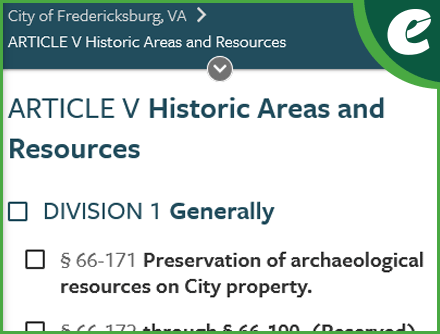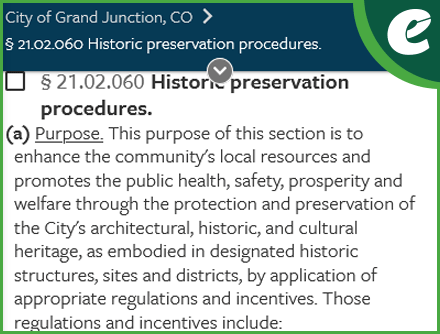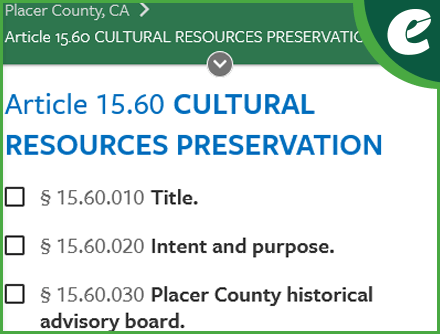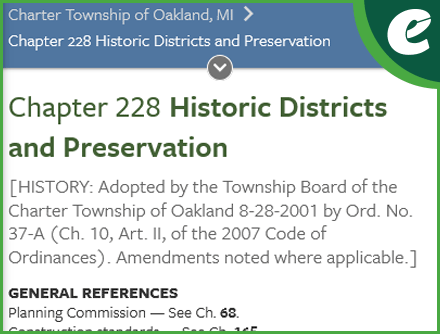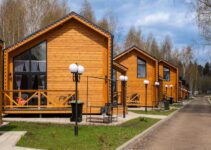Across the country, communities are rediscovering the value of their historic assets— not only as a connection to the past but also as a launch pad for economic vitality, cultural identity, and long-term sustainability. Historic preservation is more than just saving old buildings. It’s about protecting the places in community that tell its unique story and using them to strengthen for the future.
More Than Just Pretty Buildings: Why Historic Preservation Legislation Matters
Why does historic preservation matter? For one thing, it connects people to the physical legacy of their community. From a century-old firehouse to rows of Victorian homes, or a downtown commercial corridor that survived the mid-century mall boom, these places reflect the character, achievements, and struggles that have shaped a city or town.
But the benefits go beyond sentiment. According to the National Trust for Historic Preservation, preservation can:
- Stimulate economic development by attracting heritage tourism and encouraging reinvestment in older neighborhoods.
- Support sustainability goals by reducing demolition waste and conserving the embodied energy in existing buildings.
- Promote housing diversity through the adaptive reuse of historic properties for residences, including affordable units.
- Build community pride and a sense of continuity across generations.
As more municipalities work to retain their community authenticity while planning for growth, well-crafted historic preservation policies have become essential tools in the process.
View sample historic preservation legislation >
How Municipalities Can Take the Lead
While state and federal designations like the National Register of Historic Places bring prestige and eligibility for certain incentives, most preservation decisions happen at the local level. That’s where zoning, permitting, code enforcement, and community input intersect.
Some ways that municipalities can support historic preservation efforts include:
Knowledge is Preservation Power
Public outreach, signage programs, and walking tours can foster appreciation for historic sites and build support for local preservation policies. Municipal websites and partnerships with local historical societies can help broaden access.
Guiding Voices
Local preservation commissions are typically responsible for reviewing proposed alterations to designated properties, evaluating potential landmarks, and advising the governing body. A well-staffed, empowered commission ensures consistent preservation advocacy and education.
Protect What Makes You Unique
Unlike national listings, local historic districts carry enforceable protections. Designating one allows a municipality to review demolitions, renovations, and new construction to ensure compatibility with a district’s character.
Make It Worth Their While
Tax abatements, grant programs, low-interest loans, and permit fee reductions are all incentives that municipalities can use to encourage preservation. Some cities also use transfer of development rights (TDR) programs to help property owners balance preservation with development potential.
Old Spaces, New Purpose
Employing an adaptive reuse strategy (updating older buildings for modern use—like turning a warehouse into apartments or a church into a library) preserves architectural integrity while serving community needs. Zoning flexibility and streamlined permitting can ease this process.
Get Certified, Get Support
One often overlooked but highly impactful tool available to local governments is the Certified Local Government (CLG) program, a federal-state-local partnership administered by the National Park Service through State Historic Preservation Offices (SHPOs). These programs recognize municipalities that commit to historic preservation by meeting specific standards, including maintaining a qualified preservation commission and actively surveying historic resources.
When a community becomes a CLG, it gains access to exclusive funding, technical assistance, and training opportunities that can significantly strengthen local preservation efforts. CLG grants can be used for planning, education, nominations to the National Register, design guidelines, and even the rehabilitation of historic properties.
Several states offer robust CLG programs, such as:
CLG status also enhances public trust and credibility in local preservation processes. It demonstrates a municipality’s commitment to preserving its heritage and positions it as a leader in sustainable and community-centered planning.
To learn more about becoming a Certified Local Government, visit your state’s SHPO website or the National Park Service CLG Program page.
Crafting Effective Historic Preservation Ordinances
Well-written ordinances form the legal backbone of historic preservation efforts. Key elements of effective legislation include:
- Clear definitions of what qualifies as a historic resource or district
- Objective designation criteria based on age, architecture, significance, or association with historic events or figures
- Detailed review processes for alterations, demolitions, and new construction
- Appeal mechanisms to ensure due process
- Maintenance standards to prevent "demolition by neglect"
- Integration with other codes, such as zoning and building safety regulations
It’s also essential that preservation ordinances reflect the character and goals of the community they serve. Smaller towns may opt for more advisory frameworks, while larger cities often need comprehensive regulatory systems. Ordinances should strike a balance between protecting cultural resources and respecting property rights.
Looking Back to Look Ahead
As climate change, urban growth, and shifting demographics challenge the built environment, historic preservation offers a sustainable and people-centered approach to community planning. By identifying what makes a place distinctive and using policy to protect it, local governments can foster resilience, identity, and shared prosperity.
Useful examples of historic preservation legislation from the eCode360® Library
If your municipality is looking to establish preservation standards or designate historic districts, explore these examples in our eCode360 Library:
Is your code on a schedule?
Did you know you can set up a regular update schedule, so you don’t have to worry about compiling materials or taking up time and resources of your staff to do the updates yourself? As your municipality passes legislation, send it to General Code and we’ll take care of the rest. It’s just that simple!
For tips that will allow us to process your code updates most efficiently, click here.
Questions about updating your code?
Our Client Care team is available to explain the options and benefits of scheduled code updates or any other code-related questions you might have.
Additional resources:
- A Citizen’s Guide to Historic Preservation
- Federal Historic Preservation Laws, Regulations, and Orders
- Heritage Tourism
- Creating Engaging Walking Tours
- How Adaptive Reuse Can Help Solve the Housing Crisis
- National Trust for Historic Preservation
- Advisory Council on Historic Preservation
- National Park Service Certified Local Government Program
- Texas Historical Commission
- New York State Historic Preservation Office
- Wisconsin Historical Society
- eCode360® Library
